The Importance of Shipping Labels & ASN in B2B Commerce.
Learn more about GS1 128 and SSCC Barcode Labels.
In this in-depth guide you’ll learn:
How Commport Cloud EDI Solutions Can Help You Generate GS1 128 Labels?
Let’s dive right in!
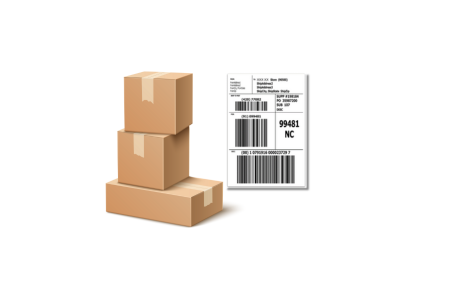
Shipping labels are pivotal in the logistics ecosystem, serving as a crucial link between senders and recipients. In this detailed guide, we’ll explore the intricacies of a shipping label and why it holds immense importance in the world of shipping and commerce.
In this comprehensive guide, we will delve into the importance of shipping labels and explore two widely used label standards:
GS1 128 and SSCC labels.
Also, we will learn the importance of ASN (Advance ship notice).
Here are a few of the topics we will review in this chapter:
- What is a shipping label?
- Why shipping labels are important?
- Benefits of shipping label
Let’s dive right in!
Shipping labels are more than just stickers on packages. These identifiers contain vital information about the shipment, including origin, destination, tracking details, and package contents. A well-crafted shipping label ensures the smooth flow of goods from one point to another, fostering efficient logistics operations.
The significance of shipping labels goes beyond mere identification. Explore the multifaceted reasons behind the pivotal role these labels play in the shipping industry and global commerce.
Shipping labels serve as the first point of contact between a package and the logistics network. Accurate and well-structured labels streamline the sorting process, minimizing errors and ensuring timely deliveries.
In an era where package theft is a concern, shipping labels contribute to security. With features like barcodes and tracking numbers, both senders and recipients can monitor the package’s journey, reducing the risk of loss or theft.
For businesses engaging in international commerce, shipping labels are indispensable. They provide the necessary information for customs clearance, contributing to the smooth flow of goods across borders
The shipping label can be the direct link to accompanying documentation such as the advanced ship notice and manifest. Combined, the shipping label and ASN provide the second component to the three-way match program wherein businesses work to match purchase orders with receiving records and invoices.
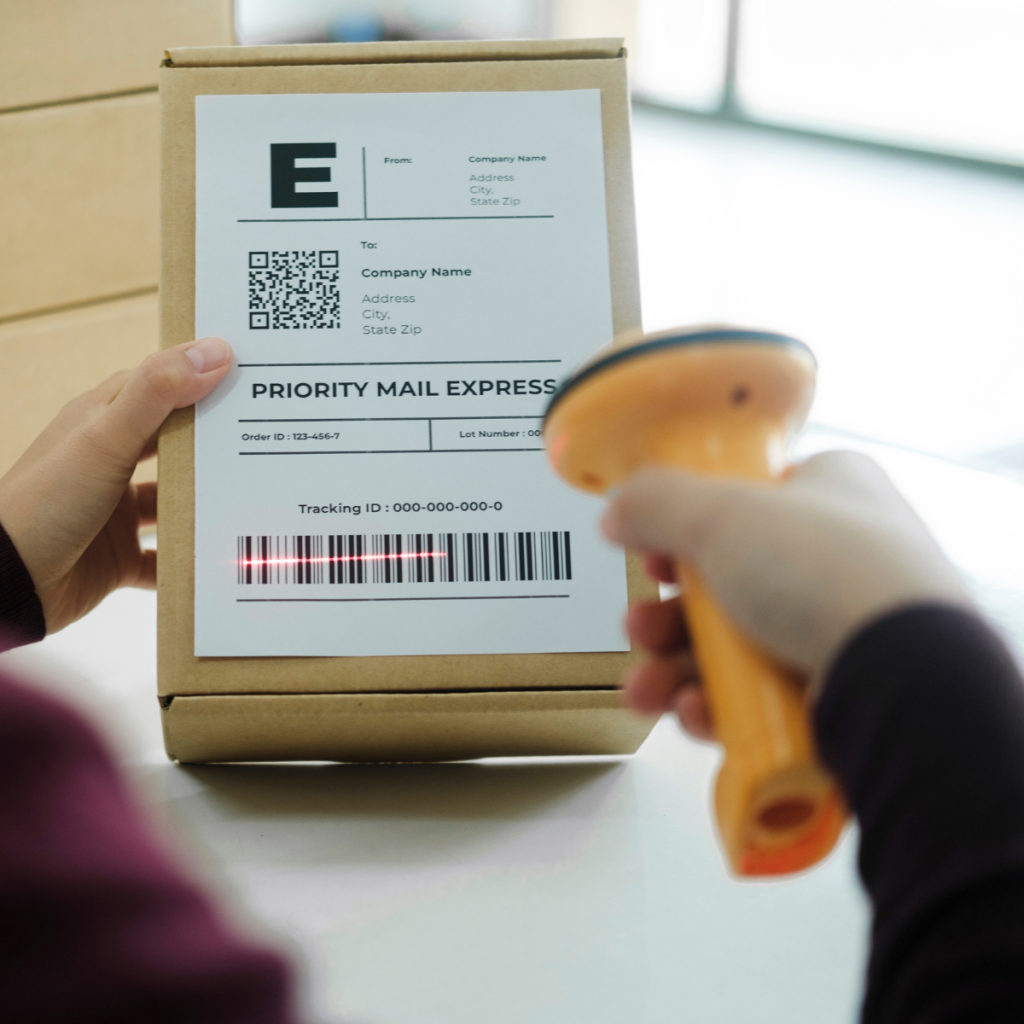
In this chapter, we will talk about
1. What is the GS1 128 label
2. Key elements of GS1 128 label
3. Creating GS1 128 label
4. Benefits of GS1 128 label
5. Common challenges with GS1 128 label
Let's get started!
GS1 128 shipping labels enable carton visibility throughout the supply chain. A GS1 128 shipping label is commonly broken down into various pre-defined zones. Each zone normally contains either text or barcode information. The bottom zone is commonly used to host the SSCC 18 barcode, which is normally tied to an EDI document referencing all the container contents.
Suppliers to the retail industry are subjected to specific zone requirements for each of their trading partners. In addition to utilizing the SSCC 18 barcode, many retailers use a Store (or Destination) barcode in a zone. By the GS1 General Specifications, all the barcodes on this label should be GS1 128 symbols.
An Application Identifier is used to specify the data format and purpose for each zone. Different companies will define their expectations for the information provided in each zone. GS1 128 not only encodes the data but provides a method of defining the meaning of the data by defining a list of “Application Identifiers” (AI’s).
The GS1 128 label is a widely adopted standard for shipping labels. It provides a comprehensive set of information encoded in a barcode format, allowing for efficient scanning and processing by carriers.
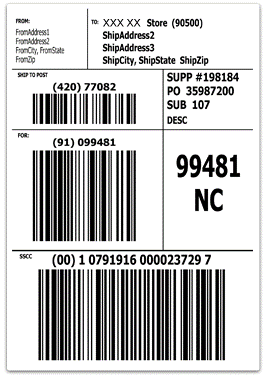
The GS1 128 label includes essential details such as the shipper’s name and address, the recipient’s name and address, and the shipping date. This information ensures proper identification and routing of the package.
The purchase order number is a crucial identifier used to link the shipment to the corresponding order. It helps in tracking and reconciling shipments, providing transparency throughout the supply chain.
The GS1 128 label encodes product-specific details, including the item’s GTIN (Global Trade Item Number), the quantity shipped, and other relevant attributes. This information enables accurate inventory management and ensures the right products are delivered to the intended recipients.
The GS1 128 label also incorporates the Serial Shipping Container Code (SSCC), a unique identifier assigned to each shipping container. The SSCC facilitates the tracking and tracing of packages throughout their journey, allowing for efficient logistics management, and provides the link to the EDI ASN.
The GS1-128 label seamlessly integrates with the Advance Shipment Notice (ASN) document, playing a pivotal role in automated Electronic Data Interchange (EDI) systems.
Here’s a breakdown of how these barcode labels support the ASN, optimizing efficiency throughout the shipment process:
The shipper affixes the GS1-128 barcode label to each carton or pallet within the shipment.
The shipper sends the ASN document via EDI in advance of the appointment time.
Upon arrival at the receiving dock, the receiver scans the GS1 128 label on each carton or pallet.
The act of scanning triggers an automated process wherein the receiver swiftly retrieves the information embedded in the Advance Shipment Notice (ASN).
Without the need to physically open any boxes, the receiver gains a comprehensive understanding of the shipment contents, including details provided in the ASN.
Armed with the ASN information obtained from scanning, the receiver can efficiently route the shipment to its designated location. Furthermore, the automated system facilitates the seamless addition of the received items to the inventory.
This integrated approach ensures that the entire process, from labeling at the shipping end to receiving at the dock, is expedited and error-free. The use of GS1-128 labels, in conjunction with the ASN, exemplifies the efficiency gains achievable through the marriage of standardized barcode technology and automated EDI systems in the realm of modern supply chain management.
Generating GS1 128 labels using EDI involves following specific guidelines and utilizing compatible software systems.
Here’s a step-by-step process to create GS1 128 labels:
Data Mapping: Map the relevant data fields from your internal systems to the corresponding elements required for GS1 128 labels. This ensures that the necessary information is accurately presented on the label and made available for EDI. Oftentimes templates are established within the barcoding system to support each partner’s requirements.
As a part of your shipping system the shipment is created and the details are made available to the barcoding system, which generates the SSCC bar code and GS1 128 shipping label based on the trading partner templates. These labels can be printed directly onto shipping containers or applied as adhesive labels.
Use an EDI software solution or service provider to transmit the shipment data in the required format to your trading partners. The EDI message should include all the necessary details about the shipment including information from the GS1 128 labels that were generated.
Ensure that the GS1 128 labels are affixed to the packages in a visible and easily scannable location. Following carrier guidelines for label placement helps optimize the scanning and processing of packages.
Commport Cloud EDI solutions can easily generate these GS1 128 labels when a supplier generates EDI 856 (ASN) right within the interface itself.
GS1-128 adheres to a global standard, ensuring uniformity and compatibility across industries and geographies. This standardization facilitates seamless communication and collaboration between different stakeholders in the supply chain.
GS1-128 accommodates a wide range of data types, from simple product identification to complex information like batch numbers and expiration dates. This flexibility empowers businesses to encode diverse data on a single label, streamlining information retrieval and processing.
One of the primary advantages of GS1-128 is its incorporation of the Serial Shipping Container Code (SSCC). This unique identifier enables end-to-end traceability, allowing organizations to track a product from manufacturing to distribution and retail.
GS1-128 barcode labels, when integrated with modern tracking systems, provide real-time visibility into the movement of goods. This transparency enhances decision-making processes, reduces the risk of errors, and bolsters overall supply chain efficiency.
The GS1-128 label includes application identifiers that convey essential information, such as item numbers and quantities. This streamlines inventory management by enabling accurate tracking and efficient organization of products within warehouses.
GS1-128 barcode labels play a crucial role in ensuring compliance with industry and regulatory standards. Many sectors, including healthcare and retail, mandate the use of GS1 standards for product identification and traceability.
The automated nature of GS1-128 barcode labels significantly reduces the risk of manual errors associated with data entry. This leads to increased accuracy in information transmission and processing throughout the supply chain.
By enhancing efficiency, minimizing errors, and streamlining processes, GS1-128 barcode labels contribute to cost savings. Businesses can optimize their operations, reduce the need for manual interventions, and enhance overall productivity.
Despite its widespread adoption, the GS1-128 barcode label system presents challenges, especially when navigating the unique requirements imposed by individual retailers. Any deviation from these specifications can result in costly chargebacks, making meticulous compliance crucial.
Every retailer establishes distinct GS1-128 label specifications, creating a complex landscape of varied requirements. Managing these diverse demands can be challenging for businesses.
The stringent adherence to retailer-specific GS1-128 label standards is paramount. Deviations may trigger chargebacks, impacting financial stability and eroding profits.
Staying abreast of ever-evolving retail requirements can be a cumbersome task. The dynamic nature of these standards demands constant vigilance to ensure ongoing compliance.
Depending on the EDI solution in use, an EDI provider, such as Commport Communications, is a good place to start for managing label requirements. The use of web portal systems like Cloud EDI from Commport enables users to create their GS1 128 labels alongside the creation of the EDI Advanced Ship Notice. For these users Commport specializes in managing label requirements on behalf of its users, ensuring compliance with the various retailer specifications.
Unlock the full potential of your supply chain with our comprehensive EDI Buyer's Guide — your first step towards seamless, efficient, and error-free transactions
In this chapter, we will answer the following questions:
- What is SSCC label?
- Significance of SSCC label?
- SSCC barcode print details?
Let’s begin!
The Serial Shipping Container Code (SSCC) is a critical component of shipping labels. It uniquely identifies each shipping container or handling unit, allowing for efficient tracking and management.
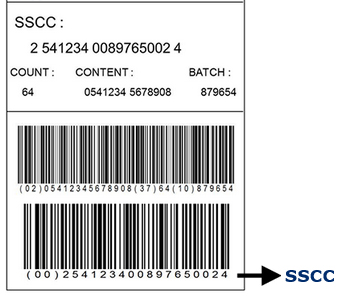
SSCC labels enable end-to-end traceability of packages, making it easier to locate and track shipments at various stages of the shipping process. This visibility reduces the risk of lost or misplaced packages.
SSCC labels play a crucial role in warehouse operations, facilitating inventory management and improving picking, packing, and shipping processes. By scanning SSCC labels, warehouse staff can efficiently track and manage stock levels.
Cross-docking, the process of transferring goods directly from incoming shipments to outbound vehicles, requires precise identification and sorting of packages. SSCC labels simplify this process by providing accurate shipment information, ensuring seamless transfer, and minimizing handling time.
When handling returns or managing reverse logistics, SSCC labels help in identifying and processing packages efficiently. By scanning the SSCC label, businesses can quickly route returns to the appropriate location and update inventory records accordingly.

The AI “00” indicates the SSCC-18 data structure will follow.
The Extension Digit has no defined logic and is used to increase the capacity of the Serial Reference
GS1 Company Prefixes are 7-10 digits. Serial Reference Numbers are 6-9 digits.
The Serial Reference number is assigned by the holder of the GS1 Company Prefix to uniquely identify a shipping container (logistic unit). A Serial Reference cannot be reused for a minimum of 12 months. The combined length of the GS1 Company Prefix and Serial Reference is always 16 digits.
Calculated using the Modulo 10 algorithm. Use a free Check Digit Calculator offered by Bar Code Graphics.
To incorporate SSCC labels into your EDI shipping process, follow these steps:
Assign a unique SSCC for each shipping container or handling unit within your warehouse or distribution center. This can be done manually or through automated systems.
Utilize EDI-compatible software or systems to generate SSCC labels based on the assigned codes. These labels should include the SSCC barcode, as well as any additional information required by carriers or trading partners.
Affix the SSCC labels to the corresponding shipping containers or handling units. Ensure that the labels are securely attached and easily scannable for efficient processing by carriers and warehouse personnel.
Include the SSCC information in your EDI messages, ensuring that it is accurately transmitted to your trading partners. This allows for seamless tracking and visibility throughout the supply chain.
Easy Integration With Any Trading Partner!
We will also explore,
- Levels in ASN
- Top 5 levels
- Breakdown and example of each level
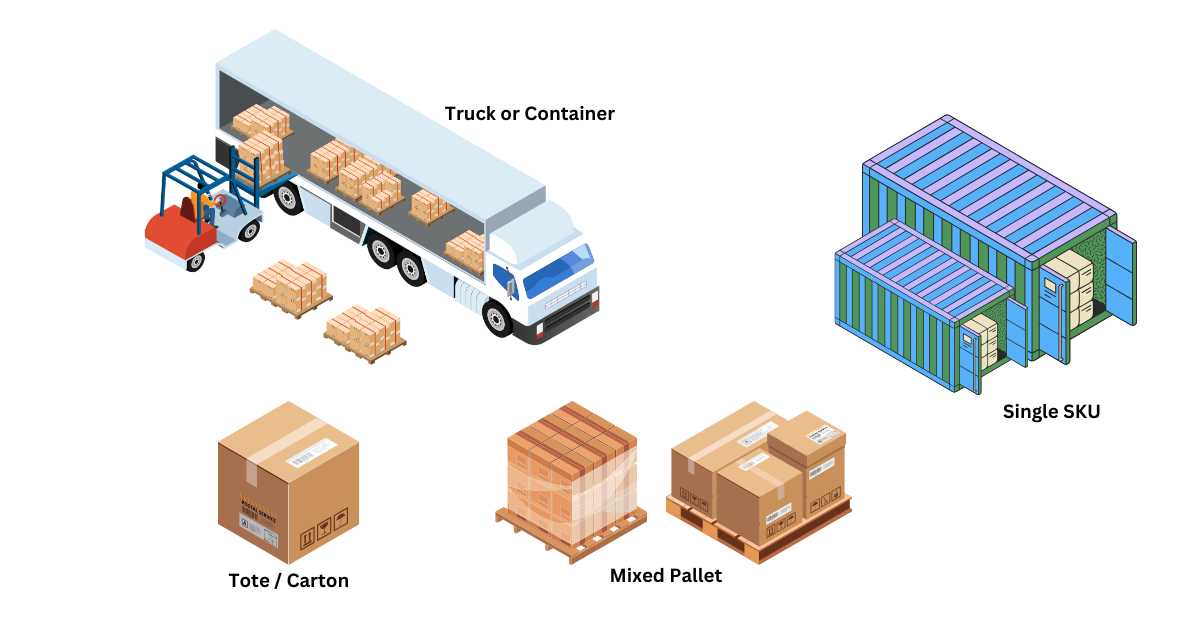
ASN (Advance ship notice) is also known as EDI 856 or Ship notice.
The purpose of the ASN is to notify the trading partner that a shipment has been processed and to communicate the contents of the shipment.
• Time and Date
• Routing
• Carrier Details
• Tracking information
• Product information
• Quantities, Expiry Details
• Bar code label details

Referred by letters SOPI, SOTI, and SOI

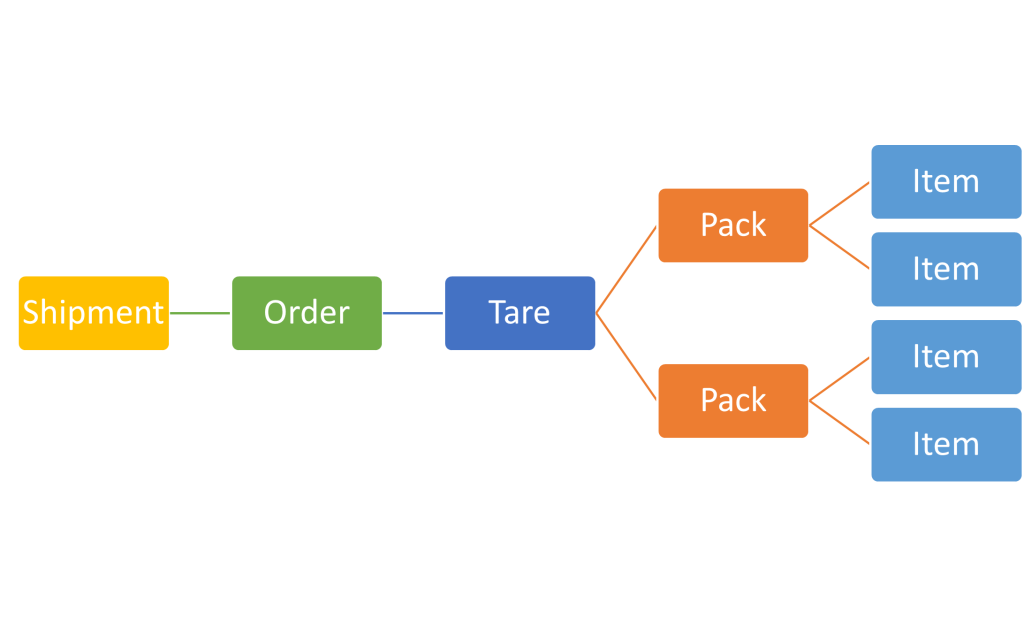
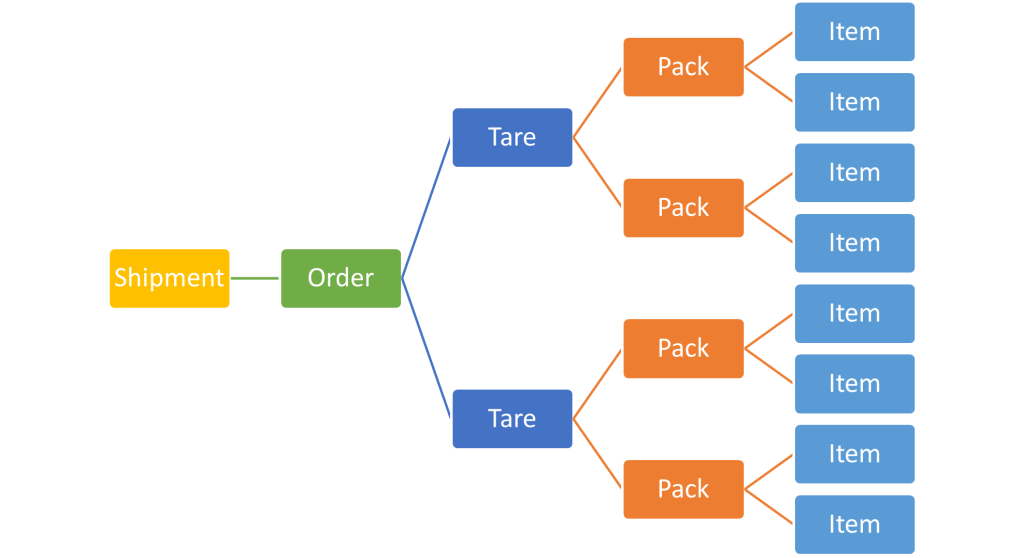

Cloud EDI is suitable for all business types and you start exchanging EDI documents with very little investment.
All you need is just a web browser and internet connection to start exchanging your EDI transactions with your business partners.
It also comes with built on label creation tool after creating the ASN.
Let’s dive right into this chapter!
Commport’s Cloud EDI Solution has built-in label solutions that allow you to easily create fully compliant GS1 128 labels for your trading partners.
With the Commport built-in shipping label generation you can,

Commport manages all label requirements and is an easy and cost-effective solution to create compliant shipping labels.
Create a full complaint shipping label that meets your trading partner’s requirements
Fully automate the shipping label creation using inbuilt tools
Never worry about creating maps or specs
No extra cost to create shipping labels*
Require manual work every time you add a new trading partner
Manually create labels for each purchase order
Whenever you have a new label requirement, you need to fill in all the information manually
Expensive and prices change significantly as you create more custom labels
Shipping labels, particularly the GS1 128 labels and SSCC bar codes, play a vital role in ensuring efficient and accurate logistics operations. By leveraging EDI technology, businesses can automate label generation, reduce errors, and enhance visibility throughout the supply chain.
Implementing GS1 128 and SSCC labels enables seamless communication with trading partners and facilitates effective tracking, inventory management, and overall customer satisfaction. Embrace the power of EDI and shipping labels and experience improved efficiency and reliability in your shipping processes.
The use of EDI and shipping labels has become increasingly prevalent in both B2B and B2C commerce industries, where efficient order fulfillment and accurate tracking are essential.
By integrating EDI data with their internal systems, businesses can automate the generation of shipping labels, ensuring timely and error-free deliveries to customers.